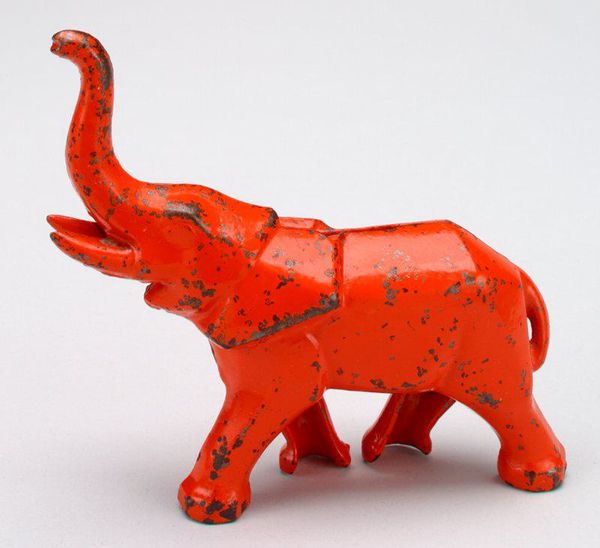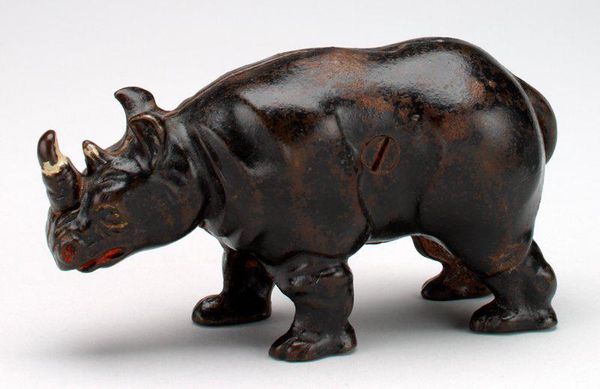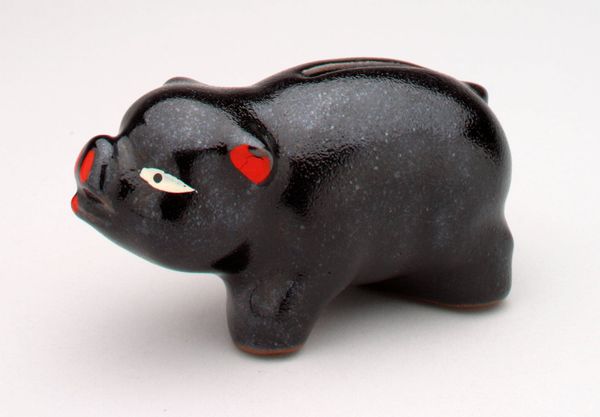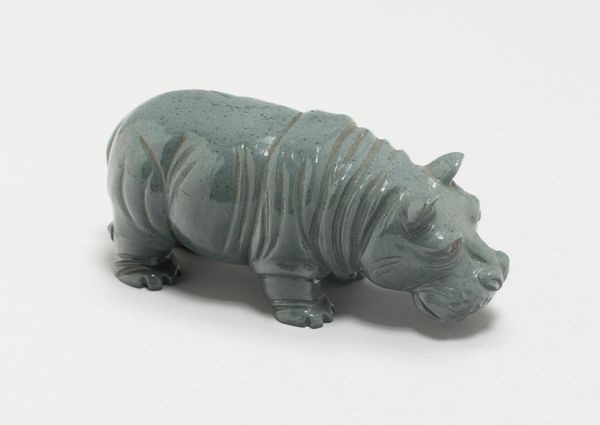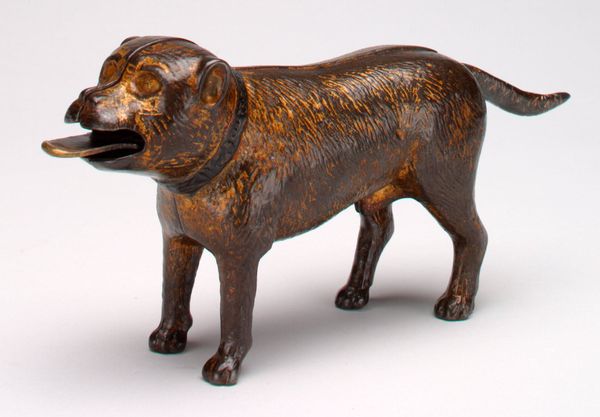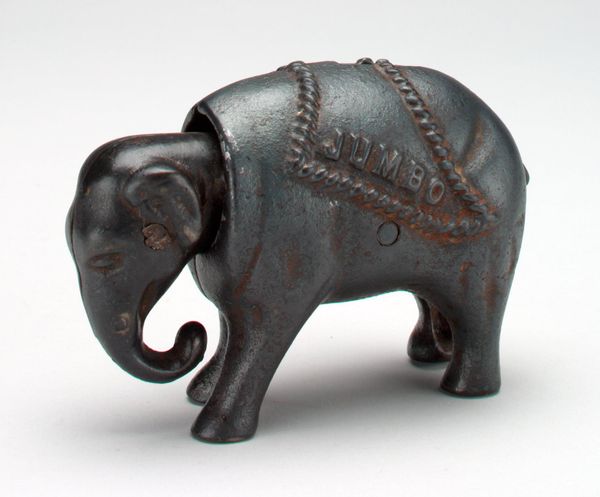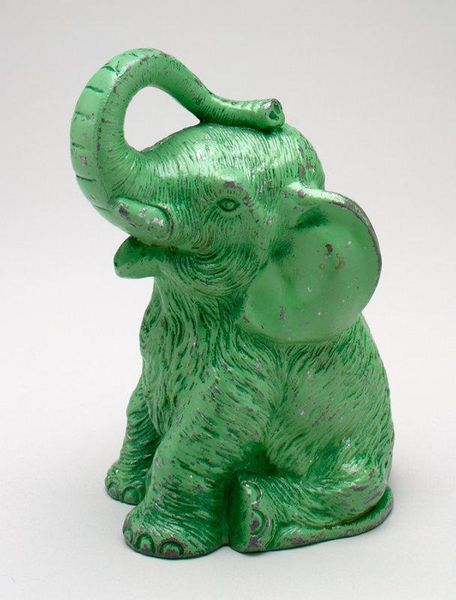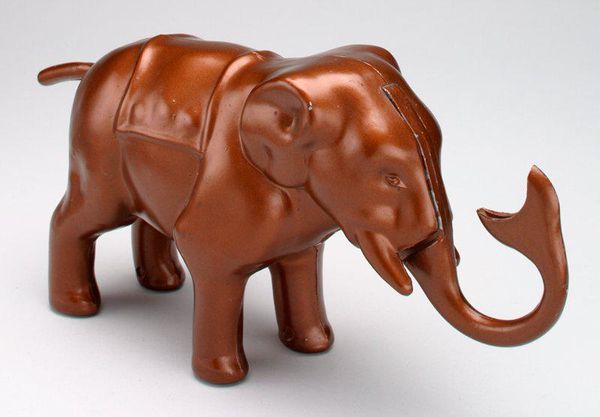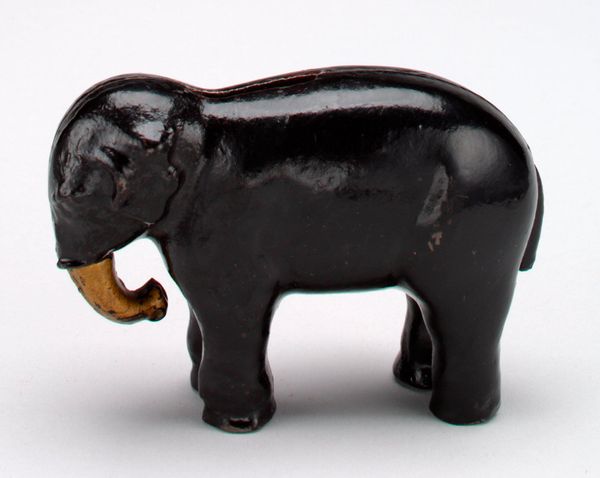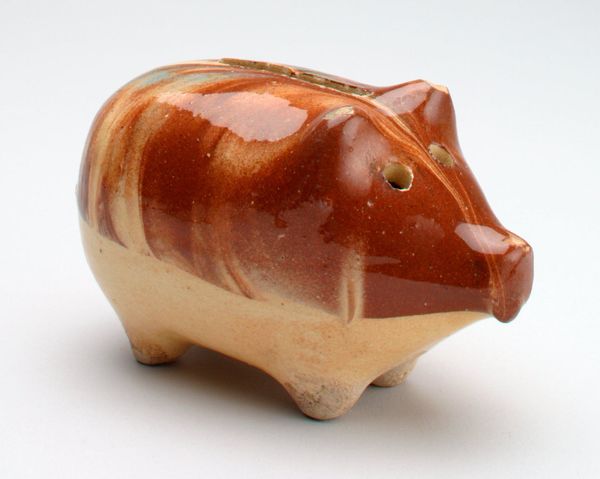
ceramic, sculpture
#
animal
#
ceramic
#
figuration
#
folk-art
#
sculpture
Dimensions: 3 1/4 x 6 9/16 x 2 1/16 in. (8.26 x 16.67 x 5.24 cm)
Copyright: No Known Copyright
Curator: This charming object is titled '-Oriental Elephant- still bank,' dating to around 1930. It resides here at the Minneapolis Institute of Art. Editor: It’s…remarkably orange! A single, bold hue dominates this little elephant. Ceramic, judging from the sheen? It evokes a sense of playful functionality; I can almost hear the clink of coins inside. Curator: Indeed! What strikes me is how this object navigates notions of Orientalism popular during the early 20th century. Elephants, of course, become symbols of exoticism. Consider the sociopolitical role such objects played, often reinforcing prevailing perceptions, however inaccurate. Editor: From a material standpoint, ceramic was widely accessible, making this a potentially mass-produced item, perhaps destined for middle-class homes. The very *process* of molding, glazing, and firing dictates much of the design, wouldn't you agree? Simplification of form becomes a necessity. The bold orange is likely an inexpensive, stable pigment for widespread application. Curator: I think you hit an important point, it does indeed speak to issues of accessibility. Its function as a coin bank merges art with everyday utility, influencing, on a much larger level, the commercial markets that museums navigate. Editor: And what labor went into its manufacture? The making involved specific artisanal or even factory-based skills. Where exactly was it produced, and by whom? What were their working conditions? Did they have ties to colonial industries? Curator: Those are difficult but essential questions, leading us to explore this elephant’s journey from a maker's studio to a child's bedroom, reflecting, on a small scale, shifts in industrial processes. I find its survival into the present so potent, its presence in the museum re-contextualizes it within a grander, historical arc. Editor: Exactly! And let's not forget the consumers. What value did they place on saving money in such a culturally charged object? Did its appeal stem solely from practicality, or was there a desire to engage with these distant, “oriental” lands? A curious collision of savings and symbol, really. Curator: A truly engaging collision, reminding us of the power an ordinary object possesses, and how folk art can often illuminate major cultural histories. Editor: Indeed. And it encourages us to reconsider the boundaries of art, consumption, and the often obscured realities of production.
Comments
No comments
Be the first to comment and join the conversation on the ultimate creative platform.
